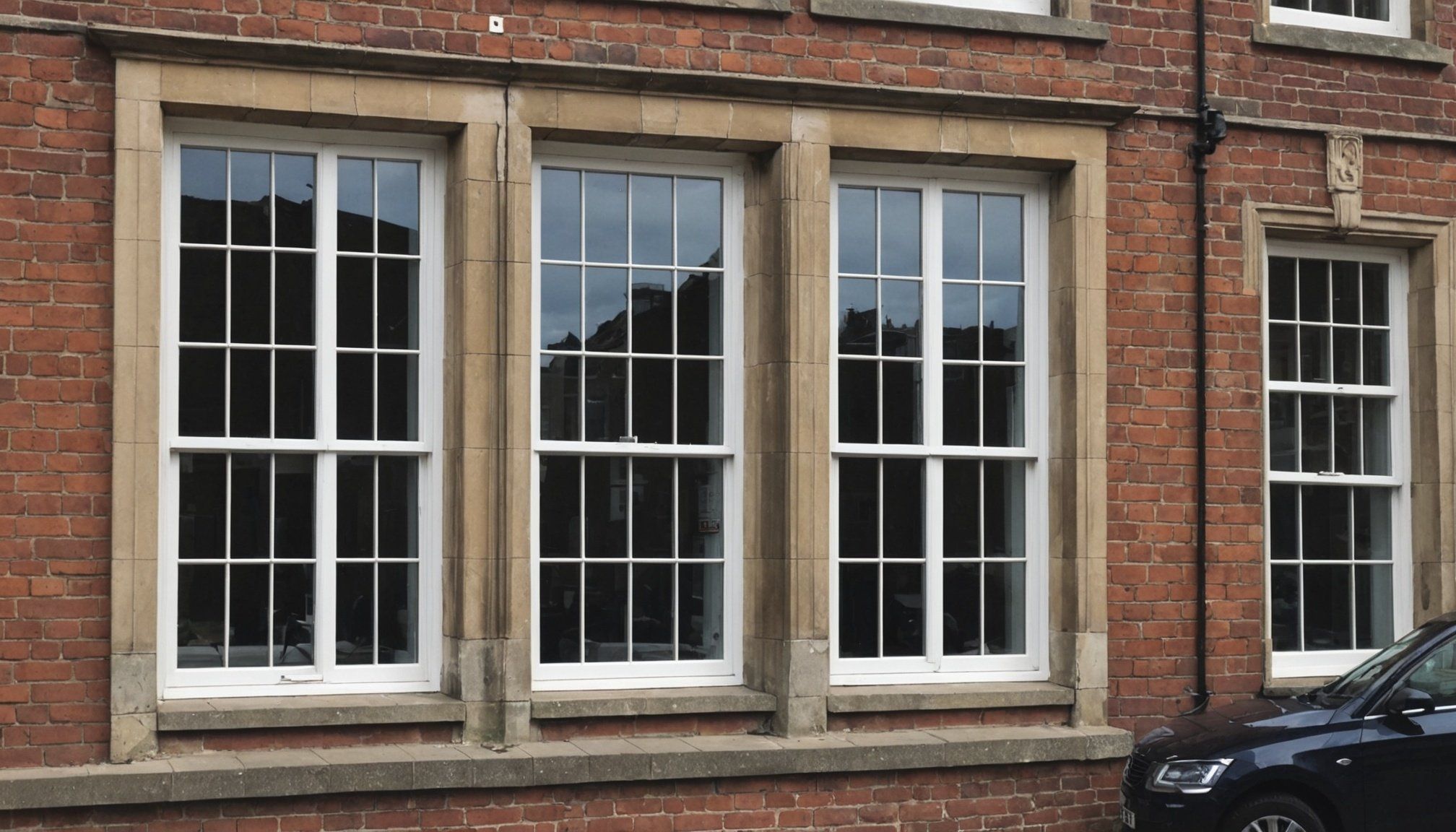Overview of Double Glazing Retrofitting
Double glazing retrofitting is the process of upgrading existing windows to enhance their thermal performance and energy efficiency. This involves replacing single-glazed windows with double-glazed units or adding a second layer of glazing to historic windows, aiming to retain the building’s character while improving its energy efficiency.
In historic buildings, energy efficiency is crucial, not just for reducing energy bills but for addressing climate change imperatives. These buildings, often located in areas like York, hold cultural significance and require careful retrofitting measures. Their unique features make standard upgrades challenging, demanding solutions that respect their historic charm.
Topic to read : Essential Tips for Preserving Your Slate Roof in a Picturesque Welsh Village
Retrofitting in York presents notable challenges, owing to its rich architectural heritage and stringent conservation laws. Balancing the need for modern innovations with the preservation of historic buildings often requires bespoke approaches. York’s context underscores the importance of customised retrofitting strategies that cater to specific structural characteristics and legal constraints. Adopting context-sensitive methods ensures that retrofitting activities do not compromise the building’s existing fabric and cultural narrative.
Ultimately, double glazing retrofitting not only promises energy savings and improved indoor comfort but also serves as a vital step in aligning historic buildings with contemporary environmental standards while preserving their historic essence.
Also to read : Discover the Best Conditions for Installing a Garden Pond in Your UK Backyard
Legal and Regulatory Framework
Navigating the legal and regulatory framework for double glazing retrofitting is crucial, especially in regions with stringent conservation laws like York. Building regulations ensure that modifications align with safety, structural, and aesthetic standards, protecting the unique characteristics of historic buildings.
Understanding Local Conservation Policies
In York, local conservation policies play a pivotal role in managing changes to historic buildings. These guidelines are designed to preserve the architectural integrity of conservation areas. It’s essential to familiarise oneself with these policies to ensure compliance when planning retrofitting projects.
Key Building Regulations for Retrofitting
Building regulations encompass a wide range of criteria, including thermal performance, fire safety, and accessibility. For retrofitting projects, adhering to these regulations is imperative to secure approval and avoid potential legal complications.
Obtaining Necessary Permits and Approvals
Securing the necessary permits is a critical step in the retrofitting process. This involves submitting detailed plans that demonstrate how the project meets both national and local regulations, including any specific requirements for listed buildings. Engaging with local authorities early can streamline this process and address any potential issues before they arise. Understanding the regulatory landscape ensures that upgrades enhance energy efficiency without compromising the building’s historical preservation.
Best Practices for Retrofitting Double Glazing
Double glazing retrofitting in historic buildings requires careful materials selection and precise installation techniques. Choosing the right double glazing materials is essential to preserve both energy efficiency and architectural heritage. While modern materials offer better thermal performance, traditional materials often integrate seamlessly with historic aesthetics. For instance, timber window frames may be preferable over uPVC in maintaining the historic charm.
Installation guidelines are crucial to minimise the impact on the building’s fabric. Techniques that consider the structure’s age and condition help in preventing potential damage. For listed buildings, installation methods that allow for reversibility, such as secondary glazing, are highly recommended. This ensures the protection of the building’s original features while enhancing energy efficiency.
To retrofit existing windows, several techniques can be employed. These include draught-proofing, adding weather seals, or even the fitting of bespoke double-glazed units. These methods effectively increase insulation without disrupting the building’s facade. Ultimately, when executed with precision, these best practices not only improve the building’s energy performance but also safeguard its historical integrity.
Case Studies in York
Exploring case studies of successful double glazing retrofitting projects in York provides invaluable insights and lessons learned. These examples illustrate the practical application of retrofitting in historic buildings, showcasing the balance between energy efficiency and preservation.
Historic Building 1 Retrofitting Overview
In the first case, a Grade II listed building underwent a thoughtful retrofitting process. The project, prioritising historic preservation, utilised bespoke double-glazed units. By employing traditional materials like timber frames, the building’s original aesthetic was maintained while achieving substantial energy efficiency improvements. This strategic approach garnered positive feedback from conservation authorities.
Historic Building 2 Retrofitting Analysis
The second building, a Georgian townhouse, faced challenges typical of York’s architectural heritage. Here, secondary glazing was employed to minimise impact on the original structure. The solution proved effective in enhancing both warmth and acoustic insulation while preserving the building’s charm.
Outcomes and Feedback from Property Owners
Owners of retrofitted properties frequently report significant energy savings and increased comfort. The projects managed to merge modern sustainability goals with a respect for historical authenticity, ensuring resident satisfaction. Ultimately, these case studies highlight the feasibility of retrofitting in historic buildings, demonstrating effective strategies for overcoming unique challenges.
Benefits and Challenges of Retrofitting
Double glazing retrofitting offers significant benefits, particularly in terms of energy savings and increased indoor comfort. By replacing or augmenting existing window structures, retrofitting helps in reducing heat loss, leading to lower energy bills. This is especially valuable in historic buildings where maintaining indoor temperature can be challenging due to outdated infrastructure.
Nonetheless, retrofitting comes with its own set of challenges. Preserving the historical integrity of a building while implementing modern updates requires a sensitive approach. It’s essential to use techniques and materials that align with the building’s original architecture, ensuring that the retrofitting process does not compromise its historical authenticity. This balance is crucial, especially in culturally rich areas like York, where architectural preservation is paramount.
A potential risk during the retrofitting process is the inadvertent damage to the building’s fabric. Such projects demand precision to avoid disrupting structural integrity. Engaging with experts familiar with historic preservation can mitigate these risks. In sum, while the benefits of retrofitting are substantial, they must be evaluated against the backdrop of maintaining the unique charm and historical narrative of the property.
Resources and Additional Support
Retrofitting historic buildings often requires specialized assistance, and several resources are available to help navigate this complex process. Engaging with local organizations can provide invaluable guidance. These bodies, like heritage trusts and conservation agencies, offer consultation and practical advice tailored to York’s specific conservation needs.
For further exploration, online resources for further reading are crucial. Homeowners embarking on retrofitting projects can access a wealth of information through digital guides and toolkits. These resources typically cover everything from project planning to execution, and can assist in making informed decisions.
Professional services for consultation are equally important. Hiring qualified professionals with expertise in energy efficiency and retrofitting historic properties can greatly enhance the success of a project. They offer insights into best practices and materials that complement the original architecture without sacrificing performance.
Key Resources:
- Local Conservation Bodies: Connect with agencies well-versed in York’s architectural requirements.
- Online Guides and Toolkits: Useful for understanding retrofitting processes.
- Qualified Professionals: Ensure adherence to best practices, helping to preserve the building’s historic charm while enhancing its energy efficiency.











